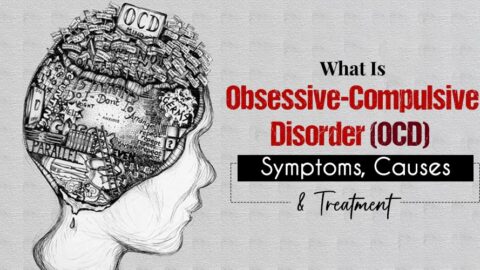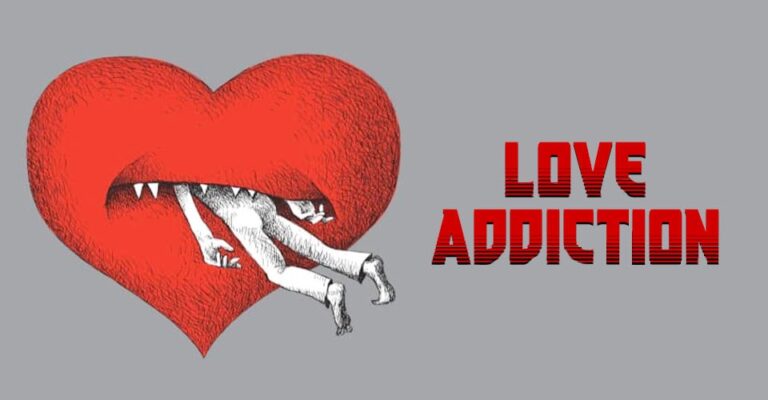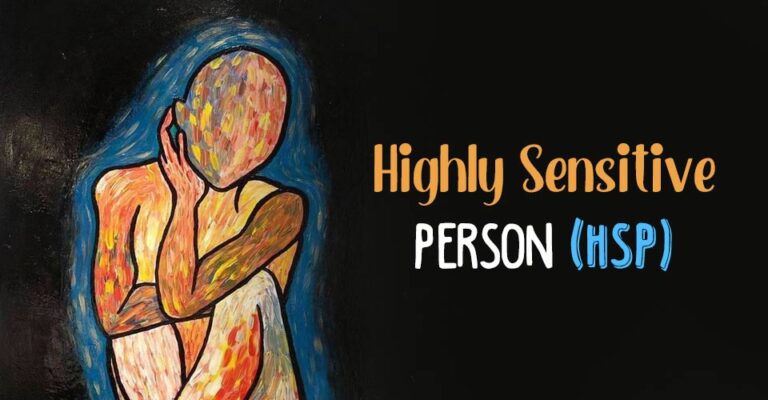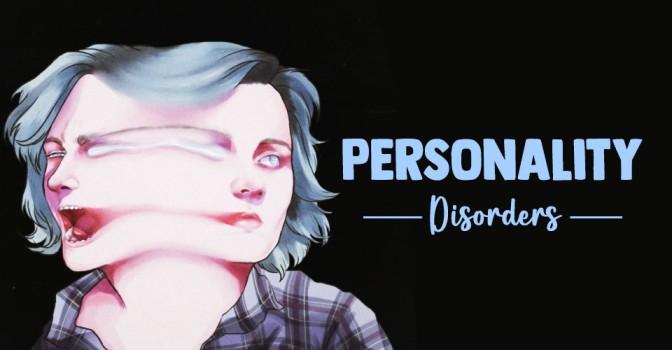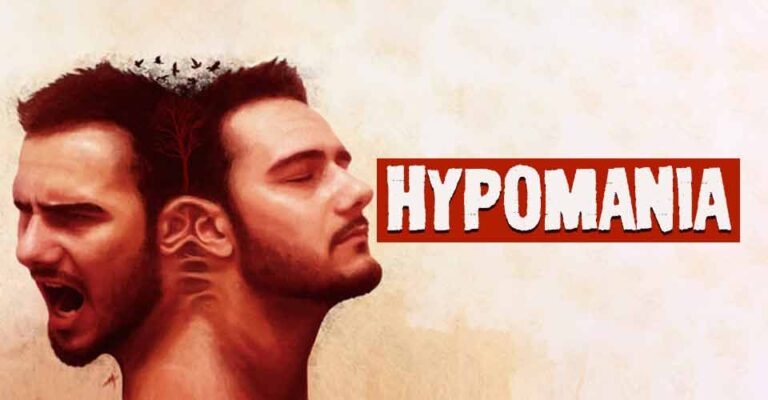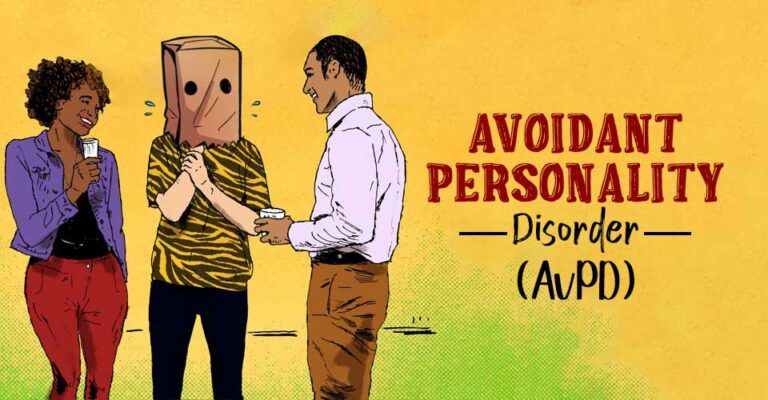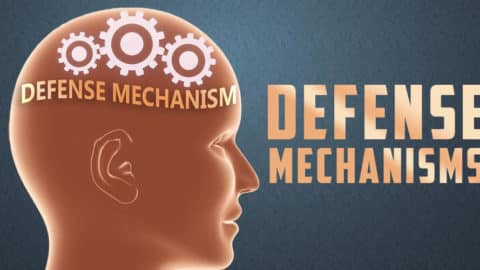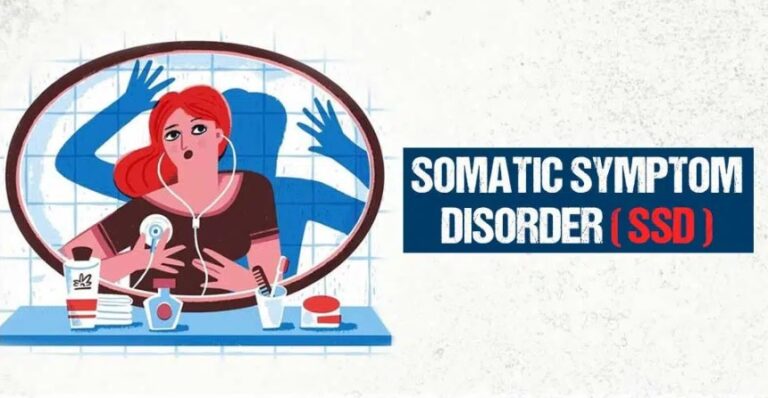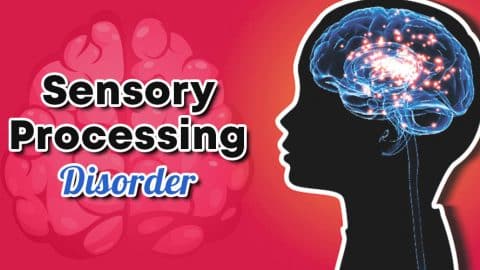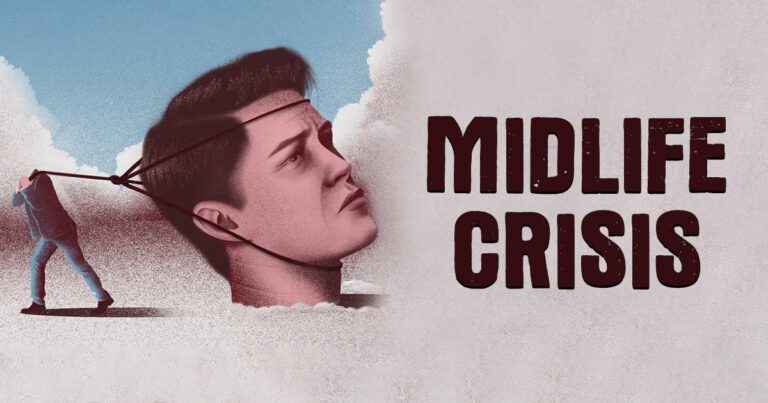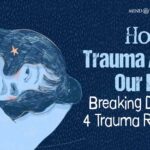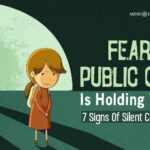Table of Contents
Obsessive-Compulsive Disorder (OCD) is a chronic mental health condition characterized by the presence of persistent, unwanted thoughts (obsessions) and repetitive behaviors or mental acts (compulsions) that an individual feels driven to perform in response to those thoughts. These obsessions and compulsions cause significant distress, are time-consuming, and interfere with daily functioning.
OCD can be characterized by:
- Obsessions
These are unwanted, intrusive, and distressing thoughts, images, or urges that repeatedly enter a person’s mind. Common obsessions include:
- Fear of contamination (e.g., from germs or dirt)
- Fear of harming oneself or others
- Intrusive thoughts about taboo topics (e.g., violence, sex, religion)
- Need for symmetry, order, or exactness
- Compulsions
These are repetitive behaviors or mental acts that a person feels driven to perform in response to an obsession or according to rigid rules. They’re meant to reduce anxiety or prevent a feared event—but are often not connected in a realistic way to the feared outcome. Examples include:
- Excessive cleaning or handwashing
- Repeatedly checking things (like locks or stoves)
- Counting, tapping, or repeating words silently
- Arranging things in a specific order
Key Features:
- Time-consuming: Symptoms typically take up more than an hour a day.
- Distress and impairment: OCD significantly interferes with daily functioning, relationships, work, or school.
- Insight: People with OCD often know their thoughts and behaviors are irrational, but feel unable to stop them.
Causes and Risk Factors:
- Biological: Imbalance in brain chemicals like serotonin.
- Genetic: Family history increases risk.
- Psychological: High levels of anxiety, perfectionism, or trauma.
- Environmental: Stressful life events or learned behaviors.
Treatment:
- Cognitive-Behavioral Therapy (CBT), especially Exposure and Response Prevention (ERP)
- Medications like SSRIs (e.g., fluoxetine, sertraline)
- In some cases: Deep brain stimulation or intensive treatment programs
Important Note:
OCD is not about being neat or organized. It’s a serious condition that can be debilitating if untreated—but with proper support and treatment, many people experience significant relief.
What Is Obsessive Compulsive Disorder?
Obsessive-compulsive disorder (OCD) is a disorder 1 NIMH. (2019, October). NIMH Obsessive-Compulsive Disorder. Www.nimh.nih.gov. Available from: https://www.nimh.nih.gov/health/topics/obsessive-compulsive-disorder-ocd wherein a person experiences uncontrollable thoughts (obsessions) and/or the urge to engage in repetitive behavior (compulsions).
Obsessive-Compulsive Disorder (OCD) can significantly impact various aspects of life, including one’s career, relationships, and social interactions. It affects individuals across all ages and backgrounds and is often linked to considerable functional impairments.
People living with OCD often struggle to control intrusive thoughts and may believe that avoiding compulsive behaviors could result in harm or danger. As a result, they feel an overwhelming urge to perform these rituals or actions to gain temporary relief from anxiety and distress.
Case Example
Ashish lost his beloved grandfather when he was just 15 years old.
A year later, he began to develop a peculiar belief: if he always started walking with his left foot and took an even number of steps, it would protect his loved ones from harm. Gripped by this thought, Ashish became consumed with counting his steps, walking slowly and deliberately to avoid ending on an odd number.
If he mistakenly stepped forward with his right foot first, it would trigger intense anxiety and distress. The fear that something terrible might happen haunted him, and he couldn’t shake off the thought. This compulsive behavior began to interfere with his daily life—he was frequently late, distracted, and disconnected from his surroundings.
Going out with Ashish became increasingly difficult for his friends and family. Though they tried to reason with him, telling him his walking pattern didn’t make sense, he remained convinced. Over time, his friends began to pull away, believing he was “losing his mind.”
Concerned, Ashish’s parents urged him to see a psychiatrist. After much hesitation, he agreed—and was eventually diagnosed and began treatment for Obsessive-Compulsive Disorder (OCD).
OCD vs. OCPD
Although the two sound quite similar, obsessive-compulsive disorder (OCD) and obsessive-compulsive personality disorder (OCPD 2 Diedrich, A., & Voderholzer, U. (2015). Obsessive-compulsive personality disorder: a current review. Current psychiatry reports, 17(2), 2. https://doi.org/10.1007/s11920-014-0547-8 ) are distinct mental disorders.
While Obsessive-Compulsive Disorder (OCD) is marked by intrusive, repetitive thoughts and distressing compulsions, Obsessive-Compulsive Personality Disorder (OCPD) is characterized by a strong need for order, control, and adherence to personal rules—often affecting those around the individual more than the individual themselves.
People with OCD experience significant anxiety triggered by their obsessions and engage in compulsive behaviors to relieve that distress. They typically have insight into their condition and are aware that their thoughts and behaviors are irrational, often wishing to be free of them.
In contrast, individuals with OCPD usually feel comfortable with their rigid routines and perfectionism. They often believe their need for order and control is beneficial, and as a result, they may not see their behavior as problematic or distressing.
Symptoms of Obsessive-Compulsive Disorder
According to the Diagnostic and Statistical Manual of Mental Disorders (DSM) 5, the main symptoms 3 Substance Abuse and Mental Health Services Administration. (2016, June). Table 3.13, DSM-IV to DSM-5 Obsessive-Compulsive Disorder Comparison. Nih.gov; Substance Abuse and Mental Health Services Administration (US). Available from: https://www.ncbi.nlm.nih.gov/books/NBK519704/table/ch3.t13/ of obsessive-compulsive disorder are:
- Persisting, recurrent, distressing thoughts
- The urge to suppress or neutralize intrusive thoughts
- Repetitive physical or mental acts performed in response to the thoughts
It must be noted that the performance of these acts are in no way rationally related to the thoughts and are only perceived to counter them.
Obsessions vs. Compulsions
Obsessive thoughts are not just worries related to day-to-day life; they tend to be more exaggerated and catastrophic. A person with obsessive-compulsive disorder cannot control their obsessions and perceive them as intrusive.
Some examples of intrusive and recurring thoughts 4 National Institute of Mental Health. (2020). NIMH» Obsessive-Compulsive Disorder: When Unwanted Thoughts or Repetitive Behaviors Take Over. Www.nimh.nih.gov. Available from: https://www.nimh.nih.gov/health/publications/obsessive-compulsive-disorder-when-unwanted-thoughts-take-over are:
- Fear of being contaminated
- Fear of misplacing things
- Fear of losing control
- Thoughts involving harm to oneself or others
- Other forbidden thoughts 5 Clark, D. A., & Radomsky, A. S. (2014). Introduction: A global perspective on unwanted intrusive thoughts. Journal of Obsessive-Compulsive and Related Disorders, 3(3), 265–268. https://doi.org/10.1016/j.jocrd.2014.02.001 related to sex (eg: incest), homicide, religion, etc.
A person with obsessive-compulsive disorder engages in compulsions to ‘counter’ these thoughts. Examples of compulsive behavior include:
- Excessive amount of cleaning
- Repeatedly washing hands
- Always taking a certain number of steps/ always counting steps
- Checking and rechecking things (eg: if the door is locked, the gas is turned off, etc.)
- Placing everything around them in a certain position, even if they may look absurd
- Engaging in other repetitive rituals that may not make sense to other people
OCD In Children
Obsessive-compulsive disorder can occur in children as young as 4 6 Kulkarni, H., & Sudarshan, C. Y. (2015). Obsessive compulsive disorder in a 4-year-old child. Indian journal of psychological medicine, 37(2), 230–232. https://doi.org/10.4103/0253-7176.155647 . The symptoms are akin to the ones usually experienced by adults. However, OCD in children 7 Krebs, G., & Heyman, I. (2015). Obsessive-compulsive disorder in children and adolescents. Archives of disease in childhood, 100(5), 495–499. https://doi.org/10.1136/archdischild-2014-306934 may resemble symptoms of disorders such as autism, as the latter also involves repetitive, stereotypical movements. Differential diagnoses can also include ADHD or tic disorders.
- Read More About Autism
- Read More About ADHD
- Read More About Tic Disorders
An earlier onset of the condition is observed more in males than females 8 National Institute of Mental Health. (n.d.). NIMH» Obsessive-Compulsive Disorder (OCD). Www.nimh.nih.gov. Available from: https://www.nimh.nih.gov/health/statistics/obsessive-compulsive-disorder-ocd .
Types Of OCD
Most symptoms of OCD can be categorized into the following five types:
1. Checking
People with this type of OCD are constantly troubled by intrusive thoughts about accidents or harm befalling themselves or their loved ones. As a result, they feel compelled to repeatedly check things like door locks, electrical switches, gas pipes, money, and valuables such as phones, jewelry, and important documents.
2. Contamination
This is one of the most common forms of OCD, where individuals experience an intense fear of contamination. As a result, they may repeatedly wash their hands, bathe, or clean objects and surfaces to ease their anxiety.
In some cases, a person may feel “mentally contaminated” after a distressing, traumatic, or embarrassing experience. To cope with this internal sense of being “dirty” or unclean, they may engage in excessive bathing or showering in an attempt to feel purified or relieved.
3. Indecisiveness
This type of OCD is often linked to perfectionism and an intense fear of making mistakes or wrong decisions. Individuals struggling with it may take excessive time to complete tasks, driven by the need to get everything “just right.” They often overanalyze choices and meticulously plan every detail of their lives in an effort to reduce uncertainty and avoid potential regret.
4. Hoarding
Although hoarding is now recognized as a distinct disorder, it can also present as a subtype of Obsessive-Compulsive Disorder (OCD). It involves the compulsive collection and retention of items that are often unnecessary or of little value. Individuals with hoarding-related OCD experience intense distress or discomfort at the thought of discarding these possessions, even when they clutter their living space or disrupt daily functioning.
5. Order and Symmetry
People with this type of OCD experience a strong need to arrange objects—such as cushions, furniture, or stationery—in a specific order or alignment that feels “just right.” If things are not placed exactly as they believe they should be, it can lead to intense feelings of agitation, discomfort, or anxiety.
What Causes OCD?
OCD is a multifactorial disorder and researchers suggest several possible reasons for the development of this disorder.
Let’s take a look at some of the most common OCD risk factors:
1. Biological Factors
Several genetic and physiological factors have been implicated in the development (etiology) of Obsessive-Compulsive Disorder (OCD).
Heredity
Genetic factors 9 Purty, A., Nestadt, G., Samuels, J. F., & Viswanath, B. (2019). Genetics of obsessive-compulsive disorder. Indian journal of psychiatry, 61(Suppl 1), S37–S42. https://doi.org/10.4103/psychiatry.IndianJPsychiatry_518_18 play a prominent role in development of this condition. Studies show that you are 25% more likely 10 NAMI. (2020). Obsessive-compulsive Disorder | NAMI: National Alliance on Mental Illness. Nami.org. Available from: https://www.nami.org/About-Mental-Illness/Mental-Health-Conditions/Obsessive-compulsive-Disorder to get affected if one of your immediate family members has OCD 11 Lenane, M. C., Swedo, S. E., Rapoport, J. L., Leonard, H., Sceery, W., & Guroff, J. J. (1992). Rates of Obsessive Compulsive Disorder in first degree relatives of patients with trichotillomania: a research note. Journal of child psychology and psychiatry, and allied disciplines, 33(5), 925–933. https://doi.org/10.1111/j.1469-7610.1992.tb01966.x .
Brain structure & chemistry
Researchers 12 Huey, E. D., Zahn, R., Krueger, F., Moll, J., Kapogiannis, D., Wassermann, E. M., & Grafman, J. (2008). A psychological and neuroanatomical model of obsessive-compulsive disorder. The Journal of neuropsychiatry and clinical neurosciences, 20(4), 390–408. https://doi.org/10.1176/jnp.2008.20.4.390 have observed that the frontal cortex and subcortical structures of the brain are different in people with OCD. Chemical imbalances in the brain, especially glutamate and serotonin, can also be contributing factors in the development of this condition.
Traumatic brain injury
Studies 13 Grados, M. A., Vasa, R. A., Riddle, M. A., Slomine, B. S., Salorio, C., Christensen, J., & Gerring, J. (2008). New onset obsessive-compulsive symptoms in children and adolescents with severe traumatic brain injury. Depression and anxiety, 25(5), 398–407. https://doi.org/10.1002/da.20398 have discovered that around 30% of children between 6-18 years of age developed obsessive-compulsive disorder symptoms within 12 months of a traumatic brain injury.
2. Psychological Factors
Different psychologists have come up with various theories related to the origin of this disorder.
Behavioral theory
According to behavioral theory 14 Turner C. M. (2006). Cognitive-behavioural theory and therapy for obsessive-compulsive disorder in children and adolescents: current status and future directions. Clinical psychology review, 26(7), 912–938. https://doi.org/10.1016/j.cpr.2005.10.004 , people with OCD believe that engaging in certain behaviors actually “prevent” bad things from happening; this serves as a reinforcement for them to continue their maladaptive cycle of behavior.
Cognitive theory
The cognitive theory 15 Rachman S. (2002). A cognitive theory of compulsive checking. Behaviour research and therapy, 40(6), 625–639. https://doi.org/10.1016/s0005-7967(01)00028-6 states that people with obsessive-compulsive disorder tend to focus excessive importance to their intrusive negative thoughts 16 Rachman S. (1998). A cognitive theory of obsessions: elaborations. Behaviour research and therapy, 36(4), 385–401. https://doi.org/10.1016/s0005-7967(97)10041-9 , perceiving them as a bigger threat than they are, resulting in a cycle of compulsive behavior and obsessive thoughts.
Psychodynamic theory
Psychodynamic theory suggests that OCD is a result of conflicting wishes, drives, and motives in the unconscious “psyche” of a person. Although the conscious mind tries to suppress inappropriate thoughts and desires, they may sometimes rise to the surface causing distress to the person and leading them to engage in compulsive acts.
3. Environmental Factors
Environmental stressors such as trauma exposure 17 Kroska, E. B., Miller, M. L., Roche, A. I., Kroska, S. K., & O’Hara, M. W. (2018). Effects of traumatic experiences on obsessive-compulsive and internalizing symptoms: The role of avoidance and mindfulness. Journal of affective disorders, 225, 326–336. https://doi.org/10.1016/j.jad.2017.08.039 in childhood may act as triggers for the development of OCD in some people.
Obsessive-compulsive disorder can also develop due to the influence of other mental conditions 18 Murphy, D. L., Timpano, K. R., Wheaton, M. G., Greenberg, B. D., & Miguel, E. C. (2010). Obsessive-compulsive disorder and its related disorders: a reappraisal of obsessive-compulsive spectrum concepts. Dialogues in clinical neuroscience, 12(2), 131–148. https://doi.org/10.31887/DCNS.2010.12.2/dmurphy like body dysmorphic disorder (BDD), tourette syndrome, tic disorders, etc.
OCD Diagnosis
According to the Diagnostic and Statistical Manual of Mental Disorders (DSM-5 19 American Psychiatric Association. (2013). DSM-5. Psychiatry.org; American Psychiatric Association. Available from: https://www.psychiatry.org/psychiatrists/practice/dsm ), to be diagnosed with obsessive-compulsive disorder, a person must experience obsessions and/or compulsions for at least one hour every day and it must cause significant distress and impairment in daily activities, such as work, study, chores, etc.
A mental health professional usually diagnoses someone with OCD after taking a detailed history of their symptoms, their premorbid life, and their family. They may also recommend some medical tests to ensure that the symptoms are not a result of some other illness or disorder.
Assessments such as the Yale-Brown Obsessive Compulsive Scale 20 Woody, S. R., Steketee, G., & Chambless, D. L. (1995). Reliability and validity of the Yale-Brown Obsessive-Compulsive Scale. Behaviour research and therapy, 33(5), 597–605. https://doi.org/10.1016/0005-7967(94)00076-v (Y-BOCS) are commonly used to analyze common obsessions and compulsions and the severity of OCD symptoms.
Treatment For Obsessive-Compulsive Disorder
There are several options when it comes to OCD treatment that can enable a person to lead a well-adjusted life. Early intervention is especially recommended for OCD. 60-70% of children 21 Kalra, S. K., & Swedo, S. E. (2009). Children with obsessive-compulsive disorder: are they just “little adults”?. The Journal of clinical investigation, 119(4), 737–746. https://doi.org/10.1172/JCI37563 with obsessive-compulsive disorder respond well to therapy and medication.
Let us take a look at some of the treatment options available for obsessive-compulsive disorder:
1. Psychotherapy
Below are the different therapy treatment for obsessive compulsive disorder:
Cognitive Behavioral Therapy
Research 22 O’Neill, J., & Feusner, J. D. (2015). Cognitive-behavioral therapy for obsessive-compulsive disorder: access to treatment, prediction of long-term outcome with neuroimaging. Psychology research and behavior management, 8, 211–223. https://doi.org/10.2147/PRBM.S75106 shows that cognitive behavioral therapy (CBT) is an effective treatment method for OCD and also increases the efficacy of medications.
Exposure and response prevention (ERP 23 Hezel, D. M., & Simpson, H. B. (2019). Exposure and response prevention for obsessive-compulsive disorder: A review and new directions. Indian journal of psychiatry, 61(Suppl 1), S85–S92. https://doi.org/10.4103/psychiatry.IndianJPsychiatry_516_18 ), a specific CBT technique, is now considered to be the first-line of therapy for both OCD in adults and children suffering from OCD. ERP enables patients to learn to intentionally expose themselves to triggers without engaging in typical compulsive acts related to obsession.
Read More About CBT Here
Group therapy
Interacting with other people suffering from OCD can help you find support and motivation to cope with your condition. Cognitive-behavioral group therapy 24 Braga, D. T., Cordioli, A. V., Niederauer, K., & Manfro, G. G. (2005). Cognitive-behavioral group therapy for obsessive-compulsive disorder: a 1-year follow-up. Acta psychiatrica Scandinavica, 112(3), 180–186. https://doi.org/10.1111/j.1600-0447.2005.00559.x (CBGT) has been found to be an effective treatment for obsessive-compulsive disorder.
CBGT can be highly effective in decreasing the impact of exaggerated thoughts and ideas. It can also help to improve the quality of life for OCD patients in a short period of time 25 Volpato Cordioli, A., Heldt, E., Braga Bochi, D., Margis, R., Basso de Sousa, M., Fonseca Tonello, J., Gus Manfro, G., & Kapczinski, F. (2003). Cognitive-Behavioral Group Therapy in Obsessive-Compulsive Disorder: A Randomized Clinical Trial. Psychotherapy and Psychosomatics, 72(4), 211–216. https://doi.org/10.1159/000070785 .
Relaxation Techniques
A number of relaxation techniques like breathing exercises, yoga 26 Bhat, S., Varambally, S., Karmani, S., Govindaraj, R., & Gangadhar, B. N. (2016). Designing and validation of a yoga-based intervention for obsessive compulsive disorder. International review of psychiatry (Abingdon, England), 28(3), 327–333. https://doi.org/10.3109/09540261.2016.1170001 , meditation, mindfulness practices, and even massage can help decrease symptoms of obsessive-compulsive disorder.
‘Kundalini yoga 27 Shannahoff-Khalsa, D. S., Ray, L. E., Levine, S., Gallen, C. C., Schwartz, B. J., & Sidorowich, J. J. (1999). Randomized controlled trial of yogic meditation techniques for patients with obsessive-compulsive disorder. CNS spectrums, 4(12), 34–47. https://doi.org/10.1017/s1092852900006805 ’ has been proven to be especially effective in the management of OCD. Mindfulness-based cognitive therapy 28 Hertenstein, E., Rose, N., Voderholzer, U., Heidenreich, T., Nissen, C., Thiel, N., Herbst, N., & Külz, A. K. (2012). Mindfulness-based cognitive therapy in obsessive-compulsive disorder – a qualitative study on patients’ experiences. BMC psychiatry, 12, 185. https://doi.org/10.1186/1471-244X-12-185 has also been found to help patients effectively cope with their OCD.
2. Medication
Some common medicines used to treat symptoms of obsessive compulsive disorder are:
Antidepressants
Selective serotonin reuptake inhibitors 29 Pittenger, C., & Bloch, M. H. (2014). Pharmacological treatment of obsessive-compulsive disorder. The Psychiatric clinics of North America, 37(3), 375–391. https://doi.org/10.1016/j.psc.2014.05.006 (SSRIs) are the first line of treatment in pharmacotherapy for OCD and have proven to provide relief to about 70% of patients. SSRIs like fluvoxamine 30 Hollander, E. (1998). Treatment of obsessive-compulsive spectrum disorders with SSRIs. British Journal of Psychiatry, 173(S35), 7-12. doi:10.1192/S0007125000297845 are especially effective in treating this disorder. However, higher doses of SSRIs prescribed for longer periods of time are necessary for the treatment of obsessive-compulsive disorder.
Read More About Antidepressants Here
Antipsychotics
Antipsychotic medication 31 Thamby, A., & Jaisoorya, T. S. (2019). Antipsychotic augmentation in the treatment of obsessive-compulsive disorder. Indian journal of psychiatry, 61(Suppl 1), S51–S57. https://doi.org/10.4103/psychiatry.IndianJPsychiatry_519_18 , such as aripiprazole and risperidone can also be recommended by therapists if SSRIs fail to help improve the symptoms. A 2019 study 32 Thamby, A., & Jaisoorya, T. S. (2019). Antipsychotic augmentation in the treatment of obsessive-compulsive disorder. Indian journal of psychiatry, 61(Suppl 1), S51–S57. https://doi.org/10.4103/psychiatry.IndianJPsychiatry_519_18 found that around 33% of SSRI-resistant patients respond positively to antipsychotics.
3. Neuromodulation
In rare instances, when psychotherapy and medication prove ineffective, neuromodulation 33 Lapidus, K. A., Stern, E. R., Berlin, H. A., & Goodman, W. K. (2014). Neuromodulation for obsessive-compulsive disorder. Neurotherapeutics : the journal of the American Society for Experimental NeuroTherapeutics, 11(3), 485–495. https://doi.org/10.1007/s13311-014-0287-9 may be suggested to treat obsessive-compulsive disorder.
Some techniques 34 Bais, M., Figee, M., & Denys, D. (2014). Neuromodulation in obsessive-compulsive disorder. The Psychiatric clinics of North America, 37(3), 393–413. https://doi.org/10.1016/j.psc.2014.06.003 of neuromodulation include:
- Transcranial direct current stimulation (tDCS),
- Electroconvulsive therapy (ECT),
- Deep brain stimulation (DBS) and
- Transcranial magnetic stimulation (TMS 35 Shivakumar, V., Dinakaran, D., Narayanaswamy, J. C., & Venkatasubramanian, G. (2019). Noninvasive brain stimulation in obsessive-compulsive disorder. Indian journal of psychiatry, 61(Suppl 1), S66–S76. https://doi.org/10.4103/psychiatry.IndianJPsychiatry_522_18 )
Takeaway
OCD can lead to severe stress, depression, and in some cases, even suicidal thoughts—depending on the intensity of the condition and the individual’s ability to cope.
If you’re experiencing persistent obsessions and compulsions that are beginning to disrupt your relationships or daily functioning, it’s important to seek help from a mental health professional. With the right treatment and support, symptoms can significantly improve, empowering you to manage the condition and lead a healthier, more fulfilling life.
At A Glance
- Obsessive-Compulsive Disorder (OCD) is a mental health condition characterized by intrusive, obsessive thoughts and repetitive, compulsive behaviors performed to reduce anxiety.
- It can affect individuals of all ages and backgrounds, with approximately 1.2% of Americans living with this condition. OCD often leads to significant emotional distress, including anxiety, depression, and in severe cases, suicidal thoughts—depending on the intensity of symptoms and the individual’s coping capacity.
- Fortunately, OCD is treatable. It is commonly managed through psychotherapy (especially Cognitive Behavioral Therapy with Exposure and Response Prevention), medication, or a combination of both. Early diagnosis and consistent treatment can greatly improve quality of life..
Frequently Asked Questions (FAQs)
1. Is OCD genetic?
OCD can be caused by a variety of biological, psychological, and environmental factors, although genetics do play a significant role.
2. Who are some famous people with OCD?
Some famous people believed to have OCD are David Beckham, Katy Perry, and Justin Timberlake.
3. What is obsessive relationship disorder?
Obsessive relationship disorder, more commonly known as Relationship Obsessive Compulsive Disorder 36 Doron, G., Derby, D., Szepsenwol, O., Nahaloni, E., & Moulding, R. (2016). Relationship Obsessive-Compulsive Disorder: Interference, Symptoms, and Maladaptive Beliefs. Frontiers in psychiatry, 7, 58. https://doi.org/10.3389/fpsyt.2016.00058 (ROCD) refers to excessive preoccupation and doubts with respect to one’s relationship. Obsessive compulsive disorder in relationships has also been linked to decreased sexual functioning.
4. How does OCD affect personal relationships?
People with OCD have problems related to various aspects of functioning in their social domain including interpersonal relationships. It has been found that increasing intensity of obsessions are negatively associated with intimacy and relationship satisfaction 37 Abbey, R. D., Clopton, J. R., & Humphreys, J. D. (2007). Obsessive-compulsive disorder and romantic functioning. Journal of clinical psychology, 63(12), 1181–1192. https://doi.org/10.1002/jclp.20423 .

